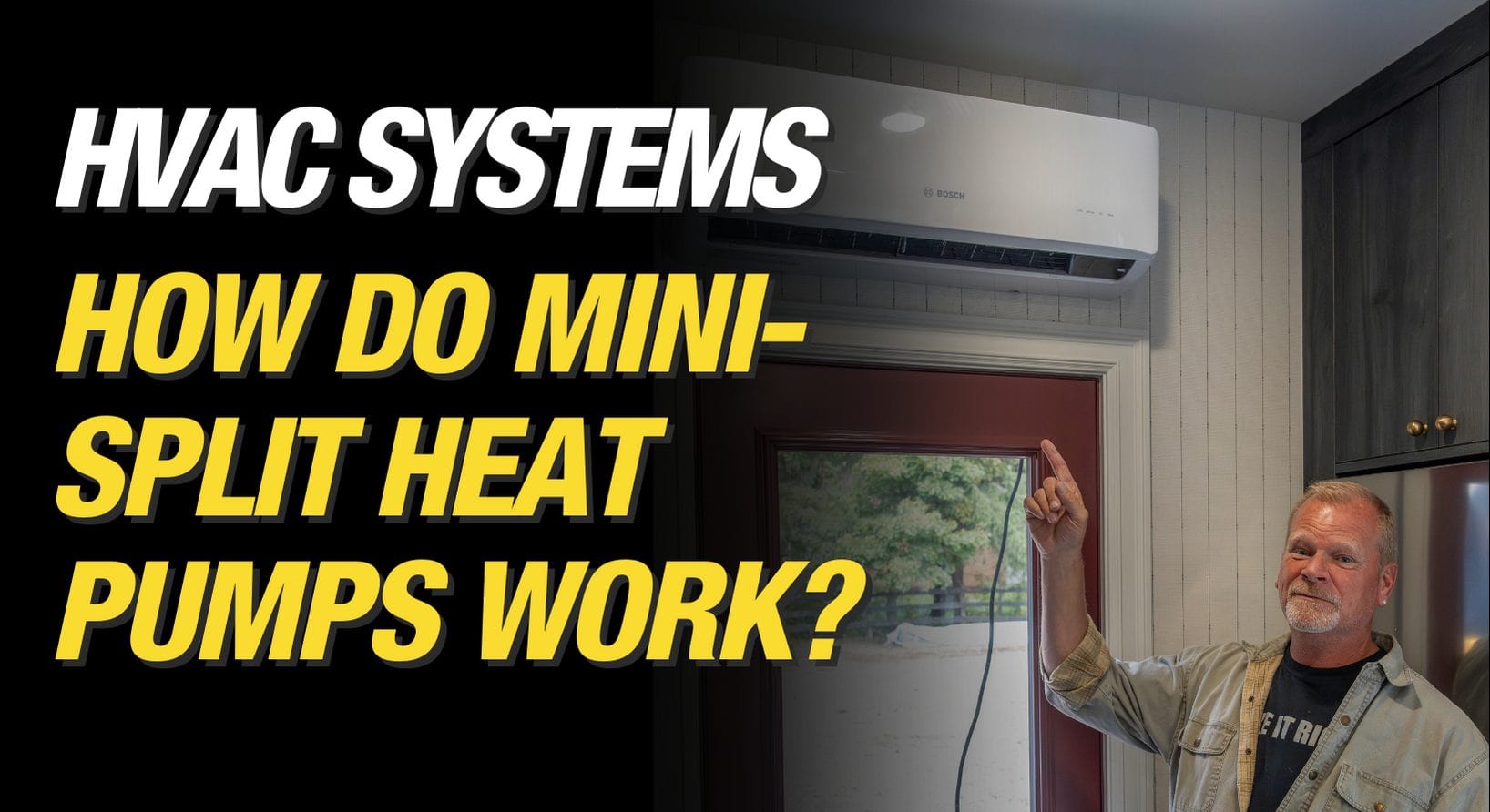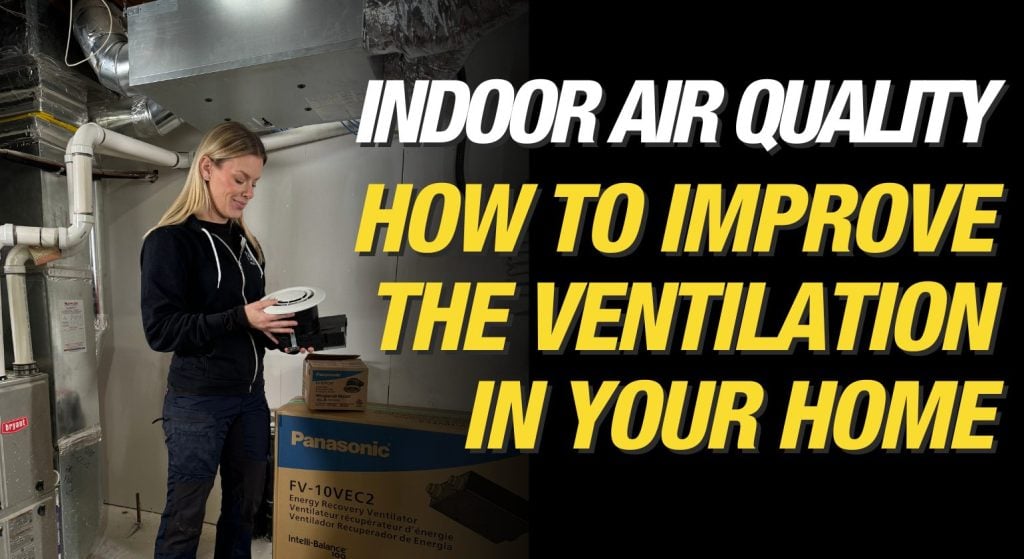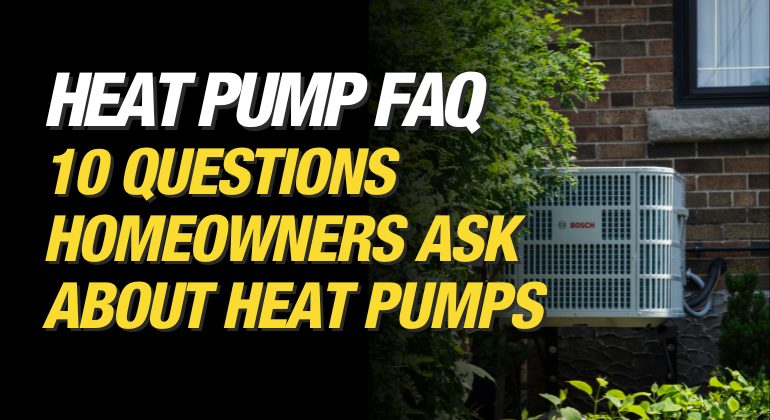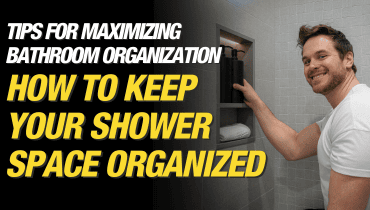HOW TO STAY ORGANIZED IN A SHOWER Keeping your bathroom organized can be a challenge, but with the right strategies and storage solutions, you can transform your shower area into...
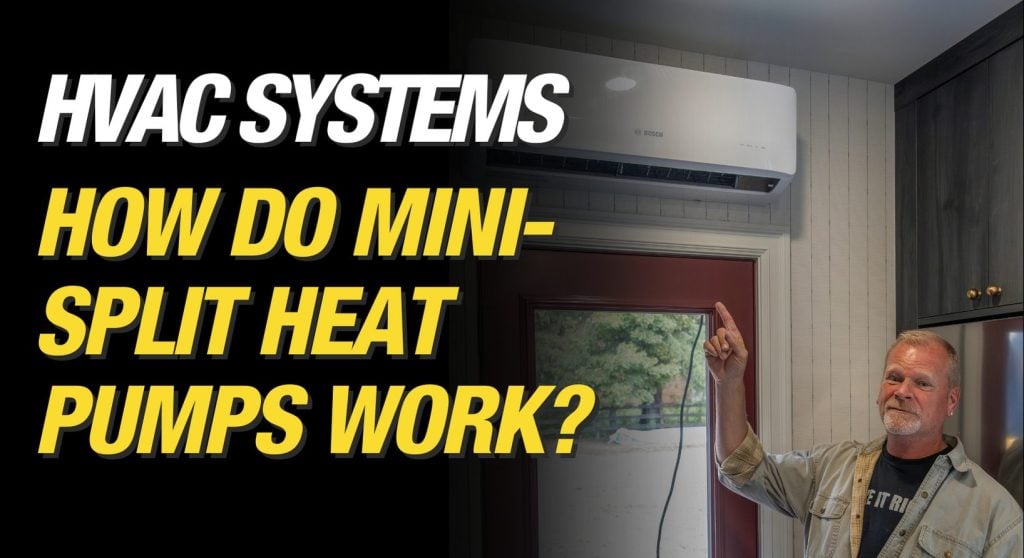
How Does A Mini-Split Heat Pump Work?
By Mike Holmes
Mike’s Advice / Home Safety & Maintenance
Wednesday, March 6th, 2024 @ 4:03pm
The Many Ways Mini-Split Heat Pumps Can Be Used
We’ve recently been adding mini-split heat pumps to our projects when we are doing an addition, like a sunroom. It’s important for us to give our homeowners a healthy, COMFORTABLE home back. On one project for Holmes on Homes, we fixed a home that had a 17-degree difference in temperature between the top floor and the basement. That’s not right. A mini-split heat pump works to heat and cool a home. They can easily be incorporated into sunrooms, additions, multi-unit dwellings or multi-floored homes.
If you are considering a mini-split, the Bosch Climate 5000 Mini-Split Heat Pump is a great choice. The cutting-edge inverter drive technology keeps your living area consistently at the right temperature and humidity. And the amazing SEER rating of up to 25 is certified by ENERGY STAR. These units provide comfort, affordability and energy efficiency.
As I’m not an HVAC professional I spoke to the experts and here’s what I learnt about mini-split heat pumps and where they can be used.
How Does a Mini-Split Heat Pump Work?
A traditional air source heat pump works by transferring heat from one space to another. When it’s hot outside or in the summer months, your heat pump is in cooling mode and it uses a refrigerant to pull warm air from inside your home and release it into the air outside.
In the cooler months, or winter months the refrigerant extracts heat from the air outside and uses it to warm your house.
A mini-split heat pump works the same way. The only difference is that this is a ductless system. They use a series of interior heads or units strategically placed throughout your house connecting to one main outdoor unit. This offers a more flexible and localized heating and cooling solution.
Because mini-splits don’t have any ductwork they also do not suffer from the energy losses that come with central forced-air systems’ ductwork. More than 30% of the energy used for space conditioning can be attributed to duct losses, mainly if the ducts are in an unconditioned area like an attic or basement.
Not to mention, augmenting or changing any ductwork in a traditional ducted system will be costly. That’s where a mini-split comes in and can be a great solution.
RELATED:
10 Heat Pump Questions Homeowners Ask
What is The Heating Seasonal Performance Factor When It Comes To Mini-Split Heat Pumps?
The Heating Seasonal Performance Factor (HSPF) is like a grade that shows how good a mini-split heat pump is at heating your home efficiently.
In the US, where climates can range from biting cold in the Northeast and Midwest to milder winters in the South, HSPF becomes an important factor in selecting a mini-split heat pump. For those frosty regions up north, a mini-split with an HSPF of around 9 or higher, like the Bosch Climate 5000 series, ensures efficient heating without shooting up your energy bills through the ceiling. Meanwhile, in the warmer Southern states, slightly lower HSPF ratings can still provide effective heating without skyrocketing your energy usage.
Across Canada, where climates span from the temperate West Coast to the harsher Northern territories, your choice of mini-split heat pumps depends on these diverse climates. In moderate zones like British Columbia, a mini-split with an HSPF rating of 8 or 9, such as the Bosch Climate 5000, is able to efficiently heat your space.
However, in the colder Prairie or Northern regions, opting for a higher-rated mini-split, aiming for an HSPF of 10 or more, becomes vital for reliable and energy-efficient heating during severe winters.
What’s great is that the Bosch Climate 5000 mini-split offers a range of HSPF ratings. This makes it a versatile and great choice for varying climates, offering efficient heating where it’s needed most. Whether you’re in a milder zone or a colder region, you know you’ll have a comfortable temperature at home without racking up excessive energy costs. We’ve been installing this in a number of our projects and I highly recommend homeowners considering a mini-split check it out.
Is A Mini-Split Heat Pump A Good Option For My Home?
One of the most frequently installed sizes is a 12,000 BTU mini-split. This will heat and cool an estimated 450–550 square feet, or about the size of a studio apartment or a mudroom that we upgraded in a recent show.
Mid-level mini splits run at 100 percent efficiency down to 20°F and typically require a base pan heater. These work well for heating moderate to cold climates. Economy-level mini splits run at 100 percent efficiency down to 30°F and may shut off at temperatures below 20°F. These are best for moderate to warm climates.
With that said, there are many factors to take into consideration when considering a mini-split heat pump, like the size of your home, heating and cooling loads, age of the home, insulation etc. It’s best to consult with an HVAC professional to find the best option for your home.
RELATED:
Where Can A Mini-Split Heat Pump Be Used?
Mini-split heat pumps are incredibly versatile and can be used in various settings. Their compact size and ductless design make them ideal for retrofitting older buildings or for room additions where traditional ductwork may not be feasible.
Here are some scenarios where a mini-split heat pump would be ideal:
- Older homes with no ductwork
- Additions or outbuildings where extending ductwork is not feasible (e.g. workshop, garage etc.
- Retrofits in homes with costly electric heat and cooling (e.g. baseboard; electric radiant, furnace)
- Homes with expensive central heating due to high fuel costs
- You have rooms that are not regularly occupied
- Spaces next to unconditioned spaces where ductwork would be exposed (e.g. above a garage)
- Additions or outbuildings where extending ductwork is not feasible (e.g. shed, barn, garage)
RELATED
How To Choose An HVAC System For Your Home
Mini-Splits Are Ideal for a Sunroom or Addition
Two areas ideal for a mini-split installation are in a sunroom or addition.
Sunroom:
A mini-split installation is perfect if you cannot easily hook into an existing HVAC system as it’s a ductless stand-alone system.
Holmes fans know and love my electrician, Frank. After experiencing some severe health issues, and being overwhelmed with DIY home renovations, we needed to help him out.
On Holmes Family Rescue, we renovated his front entrance steps, part of his backyard, and the entire main floor of his house. It looked fabulous, and he loved it, but I wanted to also help Frank stay healthy. Having healthy indoor air is essential for your home and family’s health. So, we installed a new hybrid HVAC system, which included a new high-efficiency furnace, an ERV, a mini-split heat pump, and air purification units.
I also know how much Frank loves the outdoors, but with the cold winters in Canada that can be a little bit more tough to enjoy. So we built him a four-season sunroom. With the new large windows we installed and the live plant wall, Frank can sit back and enjoy his “peace and serenity” room all year long in comfort.
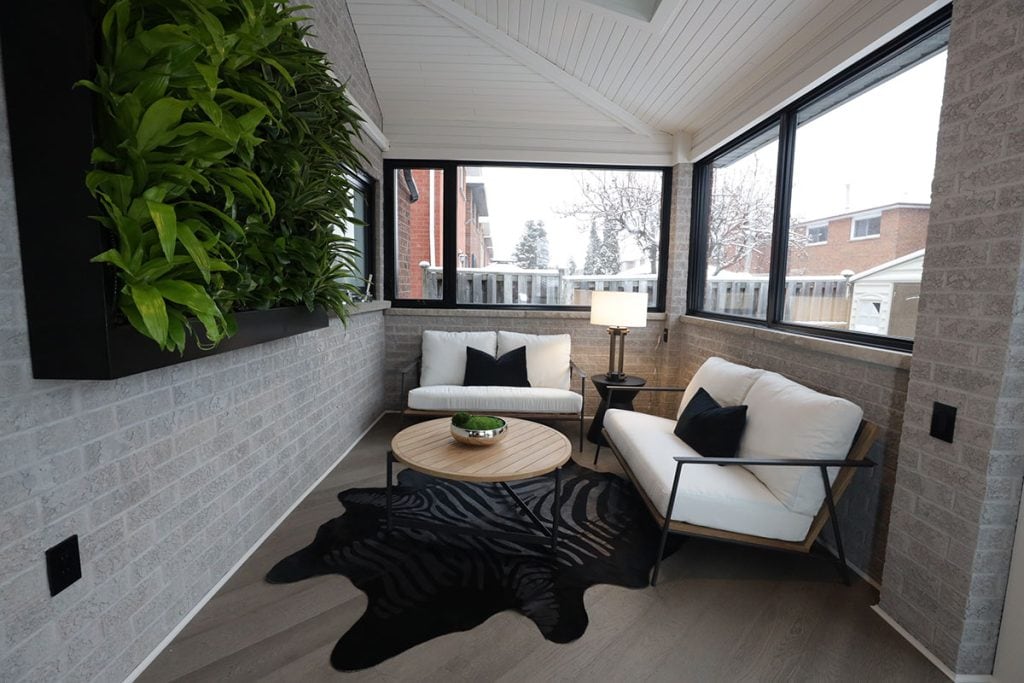
Frank’s sunroom is a 4 season sunroom that he can enjoy all year long.
We also installed the Bosch Climate 5000 Heat Pump to help him manage a comfortable temperature in this space all year round. With its inverter drive technology, these systems provide precise temperature control, ensuring comfort even in fluctuating outdoor conditions, making the sunroom a cozy retreat year-round whether it’s cold or hot outside. Plus, with their compact size and quiet operation, mini-splits blend seamlessly into the sunroom environment while offering efficient climate control for relaxation or entertainment. Love that!
RELATED:
Additional Room or Space:
On another project, we installed a Bosch Climate 5000 Heat Pump in a large mud room addition on a rural property. The homeowners have some land, livestock, a garden, pets and kids – let’s say they have an active family life. We gave them an updated mudroom with storage, a large sink and dog washing station, laundry and a powder room.

We recently installed a Bosch Mini-Split Climate 5000 heat pump on a new home addition project we worked on.
Adding a Bosch Climate 5000 Heat Pump unit was the perfect solution to heat and cool this space efficiently and with smart features. The sleek wall-mounted unit situated above the entranceway was easy to install and requires minimal maintenance. The unit also has a self-cleaning function and an intelligent eye sensor that provides improved humidity control by lowering the speed of the compressor when nobody is in the room. How great is that!
Top Floor Rooms are Always Cold or Hot
Over the years I’ve heard many homeowners complain of a cold top-floor room, a room above a garage or a converted attic space. There may be an issue with the ductwork, or the HVAC system cannot heat this additional space properly. Either way, the room is constantly too cold or too warm, depending on the season.
First, you need to ensure the space is adequately insulated and ventilated. Assuming this is done, a mini-split is a terrific way to control the temperature in a single room as it works independently from other heating and cooling systems. Installing a single zone mini-split may be the trick to keeping this top-floor space comfortable all year or just perfect for a short time when it is being used.
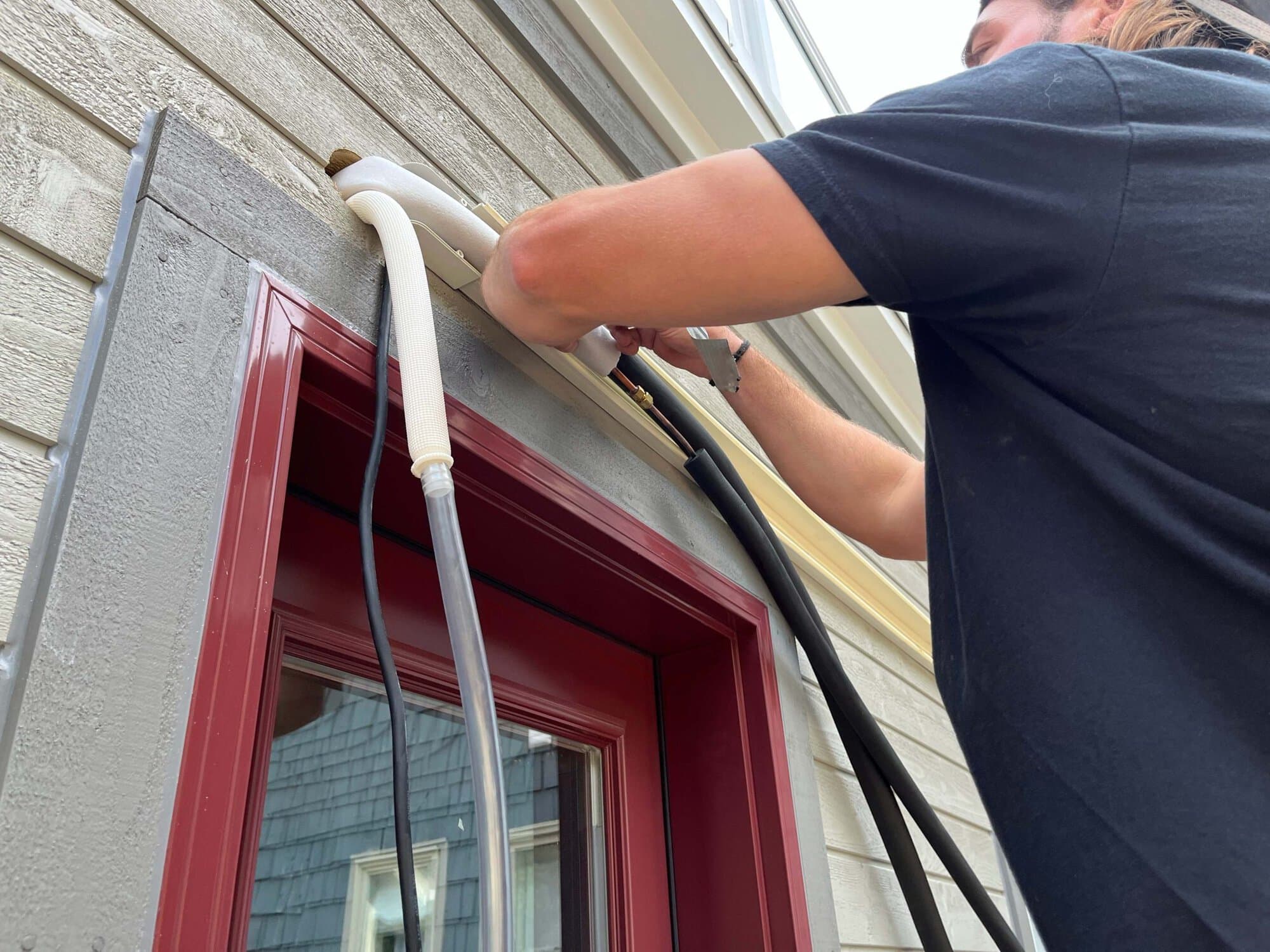
The Bosch mini-split heat pump is a ductless system. The system only needs a 3” diameter opening for running the lines. Always make sure to hire an HVAC pro for installation.
The great thing is the refrigerant lines can extend up to around 50 to 100 feet. Sometimes even more, depending on the specific unit so there is no problem reaching top-floor rooms. However, the longer the lines, the more it might affect the system’s efficiency, so it’s best to consult with a pro to find that sweet spot for your setup.
In-Law or Rental Apartment
Maintaining a rental apartment connected to a conventional HVAC system can be challenging. This is particularly true if other tenants in the building are also using the system. Mini-splits are a great solution for this situation. You can have five indoor units connected to one outdoor unit, with each indoor unit controlled independently.
This gives tenants control over the temperature in their area. It also provides the landlord more control over costs, especially since these units are highly energy-efficient.
Multi-Unit Housing
You see this a lot, especially in the city —large old homes and buildings being converted into multi-unit apartments. However, many of these homes do not have ductwork. Instead, they are heated using a boiler via radiators or baseboards inefficiently, wasting a lot of energy.
A great solution is to install one or several ductless mini-split units in the space. That way you can heat and cool an area as needed with a consistent temperature all year round. Plus they don’t require any additional ductwork allowing them to be easily installed in any space while minimizing renovation costs
Heat pumps can also provide substantial energy savings for tenants and property owners compared to conventional heating and cooling systems. Additionally, they are easy to control and relatively fast to heat and cool your space.
RELATED:
What Is The Best Mini-Split Heat Pump System?
Bosch mini-splits are a great alternative to traditional HVAC systems as they can easily integrate into your current system. That’s why we’ve installed it on our projects because we want the best for homeowners.
The Climate 5000 system uses efficient technologies to achieve up to a 22 SEER rating, minimizing power use and your electrical bill! For customized comfort, the indoor air handlers can be operated by a remote control or set with a 24-hour timer. In addition to cooling an area, a mini-split can also heat it and help maintain a constant temperature and humidity level throughout the room. The system uses the least amount of power to function after reaching the desired temperature, saving you money.
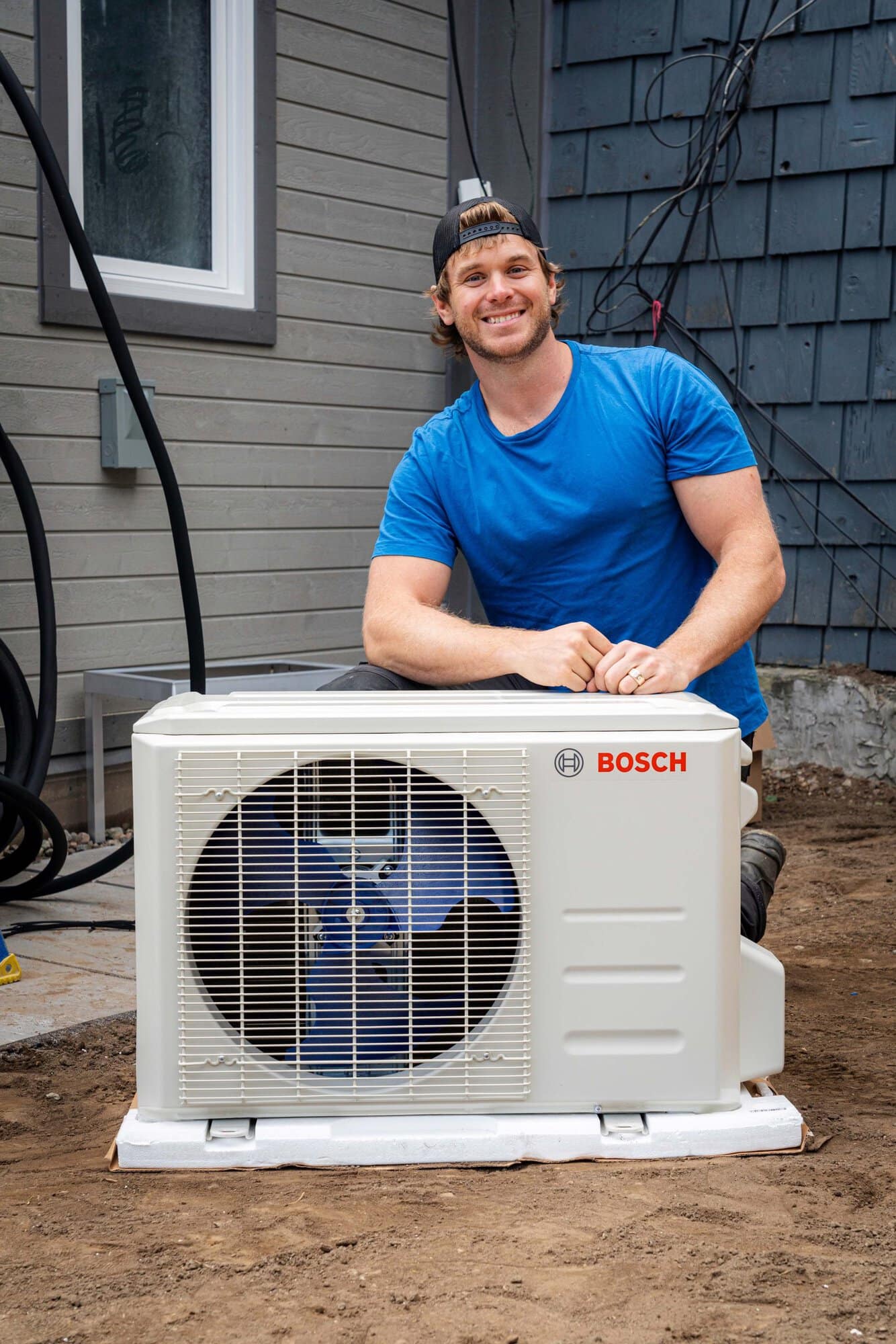
One multi-zone outdoor condenser can handle up to five air handers into almost any indoor room or space.
There are different models available in the Bosch Climate 5000 Series to meet the demands of any homeowner. Additionally, there are three main capacity categories: Regular, Max Performance, and Light Commercial. Which system is right for you will depend on where you live, the temperature, and the amount of space you want to heat and cool (one room or several).
RELATED
Exploring Bosch Mini-Split Heat Pump Energy Efficiency & Features
Benefits of Installing ABosch Climate 5000 Mini-Split
There are many benefits to having a mini-split installed in your home, including:
- energy-star certified
- dual comfort all year long (both heating and cooling)
- easy and low-cost installation
- ideal for colder climates
- advanced smart features
- remote controlled
- advanced air filters for superior
- very quiet, as low as 23 dBA
- great for smaller spaces as it doesn’t require ductwork
- Intelligent Eye feature saves energy and provides improved humidity control by lowering the speed of the compressor when nobody is in the room
A pro can help you decide which kind of HVAC system will save you the most money over time. They can assess your house and consider your heating requirements, energy costs, and other variables.
Consult with a certified Bosch HVAC professional to determine if a Climate 5000 Heat Pump is right for you.
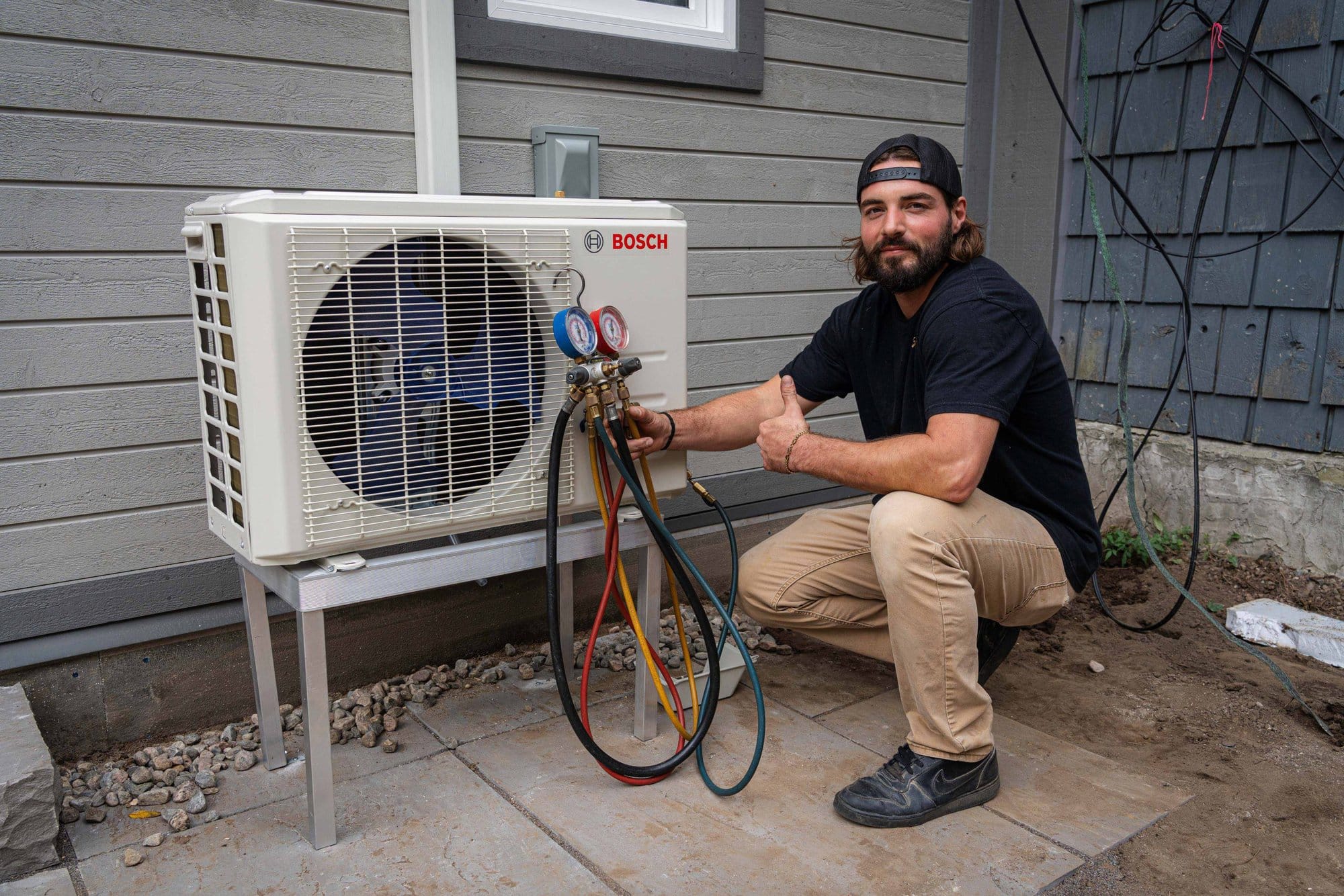
We always hire the right professionals to do the job —HVAC is one of them.
Adding or upgrading your heating and cooling system depends on several factors. This includes energy costs, condition and energy efficiency of the home, and usage. However, heating and cooling with a heat pump is often more economical than traditional heating methods. This is especially true in areas where electricity costs are lower than other energy sources, like gas or oil. Remember, a well-insulated house can better retain the heat generated by the heat pump, reducing energy usage and expenses.
Disclaimer: I only recommend products I would use myself and all opinions expressed here are our own. This post may contain affiliate links.
READ MORE:
Your Ultimate Renovation Guide – Room By Room
Heat Pump vs Boiler – Which One is Better For You?
How Much Should You Budget for Home Renovations?
